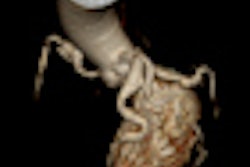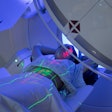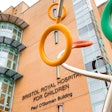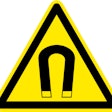
Improving communication of urgent and unexpected findings is crucial for patient care, according to the European Society of Radiology (ESR). In a recently released guidance document, ESR emphasizes the importance of clear protocols and procedures agreed upon between imaging units and referrers.
Patients may not benefit from radiologists' expertise if there is a failure to timely communicate the imaging findings, noted the ESR guideline published online first in Insights into Imaging (21 November 2011).
 Effective feedback and monitoring systems are rare, but would have a major impact on patient care, according to the ESR Subcommittee on Audit and Standards. Image and ESR logo on the home page are courtesy of European Society of Radiology.
Effective feedback and monitoring systems are rare, but would have a major impact on patient care, according to the ESR Subcommittee on Audit and Standards. Image and ESR logo on the home page are courtesy of European Society of Radiology."An ideal situation for most nonemergency situations is where imaging reports are communicated via electronic means to the correct referring doctor, with an automatic feedback or alert mechanism if the report is not accessed within a certain time," wrote members of the ESR Subcommittee on Audit and Standards.
Data exchange standards integrated into electronic systems, such as Integrating the Healthcare Enterprise (IHE), can assist institutions in providing seamless electronic communication.
"Effective feedback and monitoring systems would enable radiologists to rely on reports being accessed and read, but in practice such systems are rare, and would still not be responsive enough for life-threatening emergencies," the committee noted.
Due to large and increasing workloads, radiological examinations are frequently reported elsewhere than the site of acquisition, and radiologists are increasingly providing more complex services outside conventional working hours. It has, therefore, become even more challenging to ensure the timely communication of urgent or unexpected findings.
Responsibilities
Institutions have a responsibility to encourage and promote safe practice. Radiology report alert mechanisms are a safety feature but are often costly. Electronic information transfer and confirm/report acknowledgement systems require significant capital investment, and all additional methods are time-consuming for the radiologists. Referrers must ensure the results of investigations are properly followed-up, accessed, and acted upon -- including radiological exams. The referrer should read, and preferably mark as read, the results of all imaging investigations that they request, according to ESR.
"Hospital doctors often work in teams, and shift working is common, therefore the responsibility for reading and acting on radiological results must be clear within the team, and if the duty is delegated to another team member, this delegation should be clear," the committee advised.
Radiologists should have robust protocols in place to send reports to referrers in a reliable, timely, and consistent manner with everyone in the institution aware of the system. More problematic and open to debate is the handling of cases with urgent or unsuspected radiological findings, and where an additional alert mechanism to ensure that the findings are not overlooked may be desirable, the ESR committee noted.
Ideally, radiology departments should have written protocols outlining the procedures for the additional steps required in the event of emergency or unexpected findings being revealed. For instance, the policy could be only contacting the referrer by telephone in the case of an immediate life-threatening abnormality or clinically unsuspected cases of malignancy. This allows referrers and radiologists to understand the limited or extensive nature of the radiologist's responsibility.
Here is an outline of the key recommendations on protocols:
- Protocols should stipulate the method of alert, which may range from direct telephone contact or faxing of reports, to electronic means with annotations on PACS or RIS.
- For written protocols, it should be widely available, disseminated throughout the institution, and adhered to by the radiologists.
- In the absence of a clear policy, it is good practice for the radiologist to effectively communicate the report by whatever means seems appropriate.
- For emergency findings such as pulmonary emboli, fractures, and acute bleeding, direct contact (usually by telephone) should be made with the referring doctor or someone who can take appropriate action.
- If the findings are unexpected, the radiologist must make a judgment call but usually direct telephone communication is unnecessary. Other methods such as email, fax, alerts, or flags will suffice.
- For incidental findings, usually urgent communication is required only when action needs to be taken in a short time frame.
Overall, the advantages of enhanced communication include improved patient safety, maximum benefit to the patient, and protocols become widely understood within the organization and amongst referrers The disadvantages include referrers relying on alert mechanisms and assuming other reports are normal or have no significant findings, responsibility for ensuring imaging reports are acted upon may transfer to the radiologist despite limited information about the patient, and additional time and effort on the part of radiologists.



















